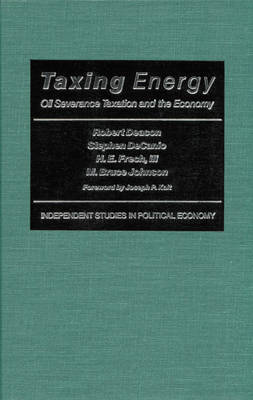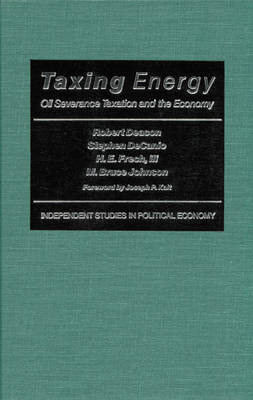
- Afhalen na 1 uur in een winkel met voorraad
- Gratis thuislevering in België vanaf € 30
- Ruim aanbod met 7 miljoen producten
- Afhalen na 1 uur in een winkel met voorraad
- Gratis thuislevering in België vanaf € 30
- Ruim aanbod met 7 miljoen producten
Taxing Energy
Oil Severance Taxation and the Economy
Robert Deacon, Stephen Decanio, H E Frech III, M Bruce Johnson
Hardcover | Engels
€ 52,45
+ 104 punten
Omschrijving
Severance taxes--taxes levied upon the production of oil and natural gas--have long been popular with state governments. Such taxes are thought to have minimal impact upon the areas where petroleum wells are located, the costs of such taxes can be "exported" to a large and dispersed consumer base in other states, and an oil or gas well can not be moved to another state where taxes are lower. Because of these factors, severance taxes seem like "ideal" taxes for legislators to impose. But how do severance taxes work in the real world? Are they as really "painless" as they sound? Because of the immobility of the resource being taxed, do states tend to overtax? In this provocative study, the authors survey state severance taxes and find they tend to lower petroleum production, reduce jobs in the states imposing such taxes, and have negative effects that can ripple throughout a state's economy. Severance taxes look like "easy targets" for state governments. But as this book demonstrates--using thorough analysis--such taxes are often downright counterproductive and can actually reduce total state tax revenues.
Specificaties
Betrokkenen
- Auteur(s):
- Uitgeverij:
Inhoud
- Aantal bladzijden:
- 161
- Taal:
- Engels
Eigenschappen
- Productcode (EAN):
- 9780945999690
- Verschijningsdatum:
- 1/01/1990
- Uitvoering:
- Hardcover
- Formaat:
- Bibliotheekbinding
- Afmetingen:
- 162 mm x 235 mm
- Gewicht:
- 458 g

Alleen bij Standaard Boekhandel
+ 104 punten op je klantenkaart van Standaard Boekhandel
Beoordelingen
We publiceren alleen reviews die voldoen aan de voorwaarden voor reviews. Bekijk onze voorwaarden voor reviews.










